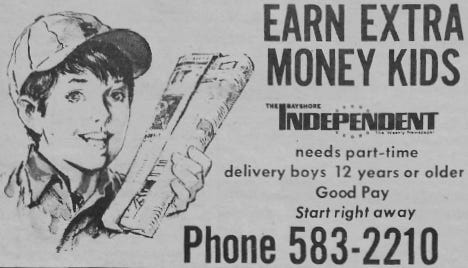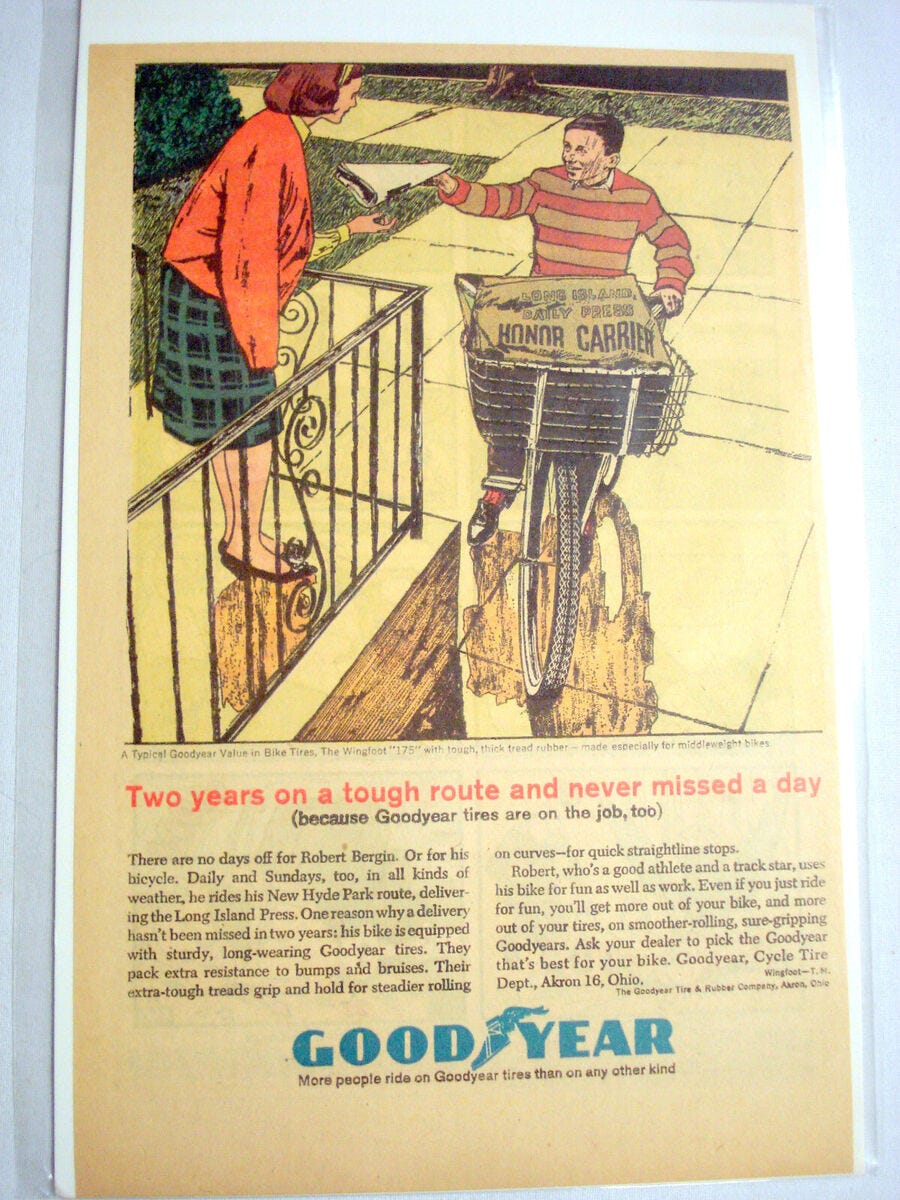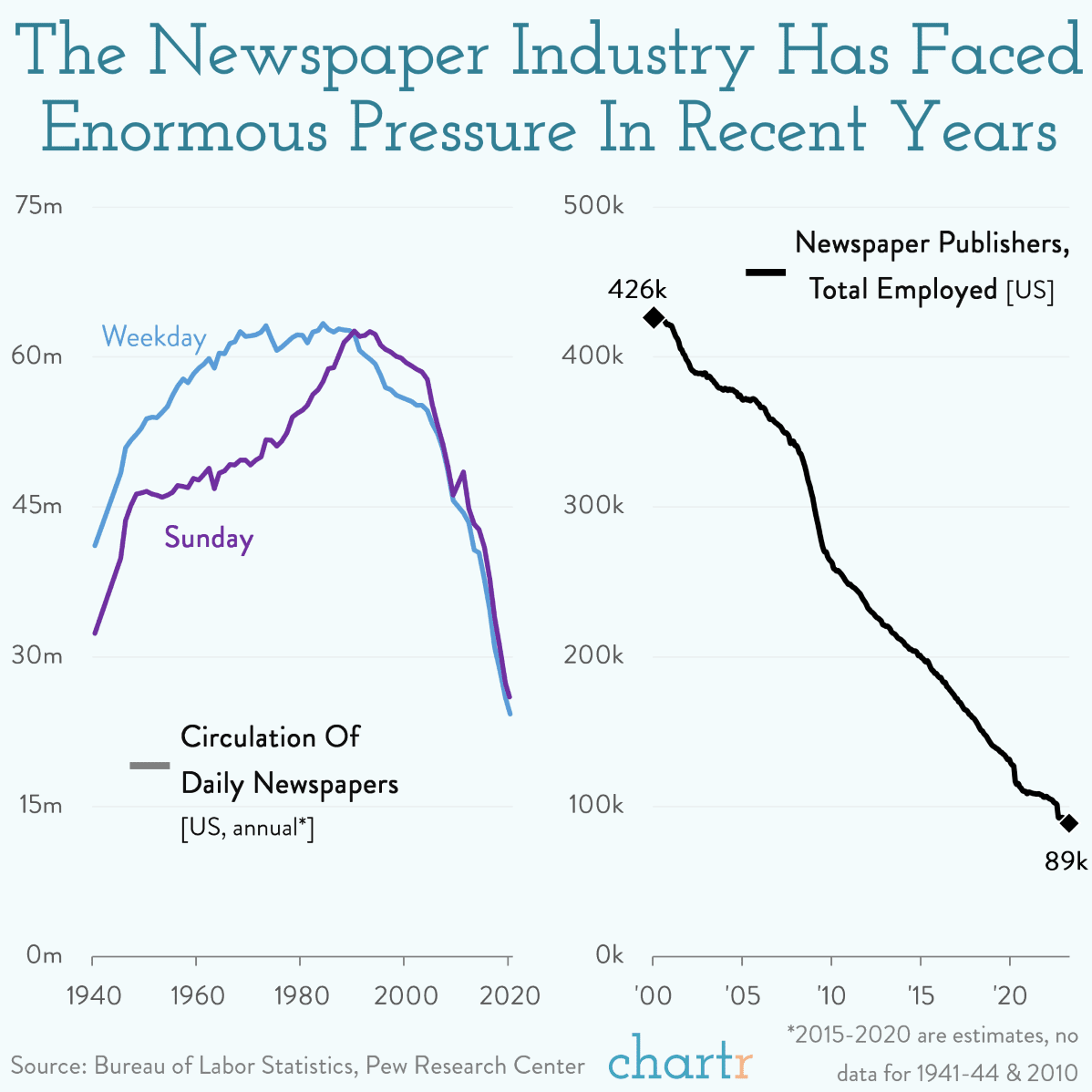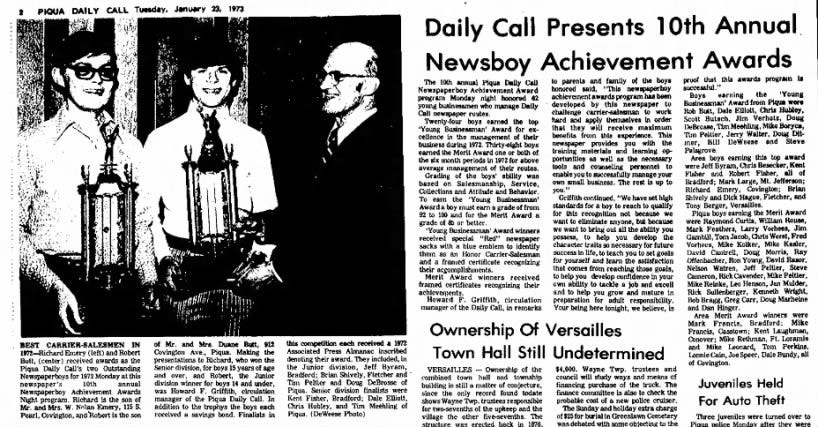Episode 2: Newspaper Carriers Establish Gen X Work Ethics
Overview of Gen X Jobs, Work Ethic and Opportunities
Gen X Years Born: 1965-1980
Topic: Starting work at age 5 and starting your own 10-99 business at age 10.
Podcast Host and Special Guests: Harley (ND 71), Sterling (AZ 74) and host Jason Spiess (MN 74)
In the mid-20th century, the image of a young boy on a bicycle, slinging newspapers onto porches with precision, was as American as apple pie. The "paperboy" was a cultural icon, embodying the entrepreneurial spirit and independence valued by society.
Yet today, this image has faded into the past, as laws and societal shifts have rendered the once ubiquitous job nearly extinct. This article explores the history of child newspaper delivery people, the factors leading to its decline, and the broader implications for our evolving workforce.

A Historical Snapshot: The Birth of the Paperboy
The concept of children delivering newspapers dates back to the late 19th century. As newspapers became a primary source of information, timely delivery was essential. Publishers turned to local youths, who were eager to earn their own money. The job was relatively simple: collect the newspapers from a drop-off point, then deliver them to subscribers' homes, usually in the early morning or late afternoon.
The paperboy (and occasionally papergirl) became a symbol of industriousness. In an era when child labor in factories was increasingly scrutinized and regulated, delivering newspapers was seen as a healthy alternative. It taught responsibility, time management, and provided a sense of accomplishment. The job was often a rite of passage, the first step towards adulthood and financial independence.
The Golden Era: 1950s to 1970s
From the 1950s to the 1970s, the paperboy was a fixture in American neighborhoods. This period saw a peak in newspaper circulation, coinciding with the post-war economic boom. Parents encouraged their children to take on delivery routes, viewing it as an opportunity to learn valuable life skills.
For many, the job was more than just a way to make money. It fostered a sense of community, as paperboys often knew their customers personally. They would collect payment door-to-door, allowing for regular interaction and fostering trust.
Stories abound of paperboys who went above and beyond, such as delivering papers during snowstorms or helping elderly customers with small tasks.
The Decline: Late 20th Century Onwards
The decline of the paperboy began in the late 20th century, driven by several factors. Firstly, the rise of digital media started to erode the dominance of print newspapers. As circulation numbers dwindled, so did the demand for home delivery services.
Secondly, the changing nature of neighborhoods played a role. Suburban sprawl meant longer routes, making it less feasible for children to deliver papers on foot or bicycle.
Additionally, increasing traffic and safety concerns made parents hesitant to allow their children to take on delivery jobs.
The third and perhaps most significant factor was the changing legal landscape. The Fair Labor Standards Act (FLSA) of 1938 set the stage for federal regulation of child labor. While initially, newspaper delivery was exempt, ongoing concerns about child safety and labor practices led to stricter regulations.
In 1994, amendments to the FLSA included newspaper delivery under its protections, effectively making it illegal for children under the age of 14 to deliver newspapers. The law aimed to protect children from exploitation and ensure their focus remained on education.
The Modern Landscape: What Replaced the Paperboy?
Today, adult carriers in cars have largely replaced child newspaper deliverers. These carriers handle multiple routes, often in the early hours of the morning. The job has shifted from a child's part-time hustle to a full-time or supplementary income for adults.
The transition reflects broader societal changes. There is an increased emphasis on child safety and education, with after-school activities and academic commitments taking precedence over part-time jobs.
Additionally, the gig economy has introduced new ways for teenagers to earn money, from babysitting and tutoring to online opportunities that were unimaginable in the paperboy's heyday.
The Legacy: Lessons from the Past
The disappearance of the paperboy marks the end of an era, but its legacy endures. The job taught generations of children the value of hard work, responsibility, and community service. It also highlighted the adaptability of the workforce and the constant evolution of job markets.
While nostalgia paints the past in rosy hues, it is important to recognize the advancements in child labor laws that prioritize the well-being and development of children.
The transition away from child newspaper delivery is a reflection of a society that values education and safety, ensuring that the youngest members can grow and thrive in a supportive environment.
Conclusion: A Chapter Closed, A New One Begins
The story of the paperboy is a poignant reminder of how much the world has changed in a few short decades. It speaks to the enduring spirit of youth and the ever-changing landscape of work.
As we look back with fondness on the era of paperboys, we also look forward to the new opportunities that await today's children, shaped by a society that continually evolves to protect and empower its future generations.
Follow ReGeneration X on TikTok today!
About the Host Gen X Jason (aka Jason Spiess)
Jason Spiess has over 39 years of media experience from being the host to the publisher to an editor to the executive producer to having principal ownership in several media companies.
Spiess is currently the host of several newsmagazine programs and podcasts that carry a radio network that spans five states and two countries, as well as worldwide through iHeart and other podcast platforms, as well as a professional social media audience of over 300K followers.
In addition to his newsradio programs and industry podcasts, Spiess is a regular contributor to many industry publications, newspapers and news websites.
Spiess has also worked as a guest correspondent for a number of local and global news organizations from 660 KEYZ-AM Williston to CNBC to the BBC World.
Spiess engages in one-on-one, in-depth conversations and round-table discussions that center around topics that impact communities and culture. His non-political approach to subjects and non-polarizing discourse, provide the venue for an intelligent conversation. He has interviewed hundreds of extraordinary men and women of science, politics, art, business, sports, technology, literature and entertainment. These conversations are truly one-of-a-kind, often infused with humor, emotion, intelligence, and passion.
Spiess is a full-time father, cancer survivor, environmentalist, author and graduate of North Dakota State University. Spiess also operates an off-the-grid office integrating sustainable solutions, including the best practices with an Industrial Forest and Digital Diversity.


















Share this post